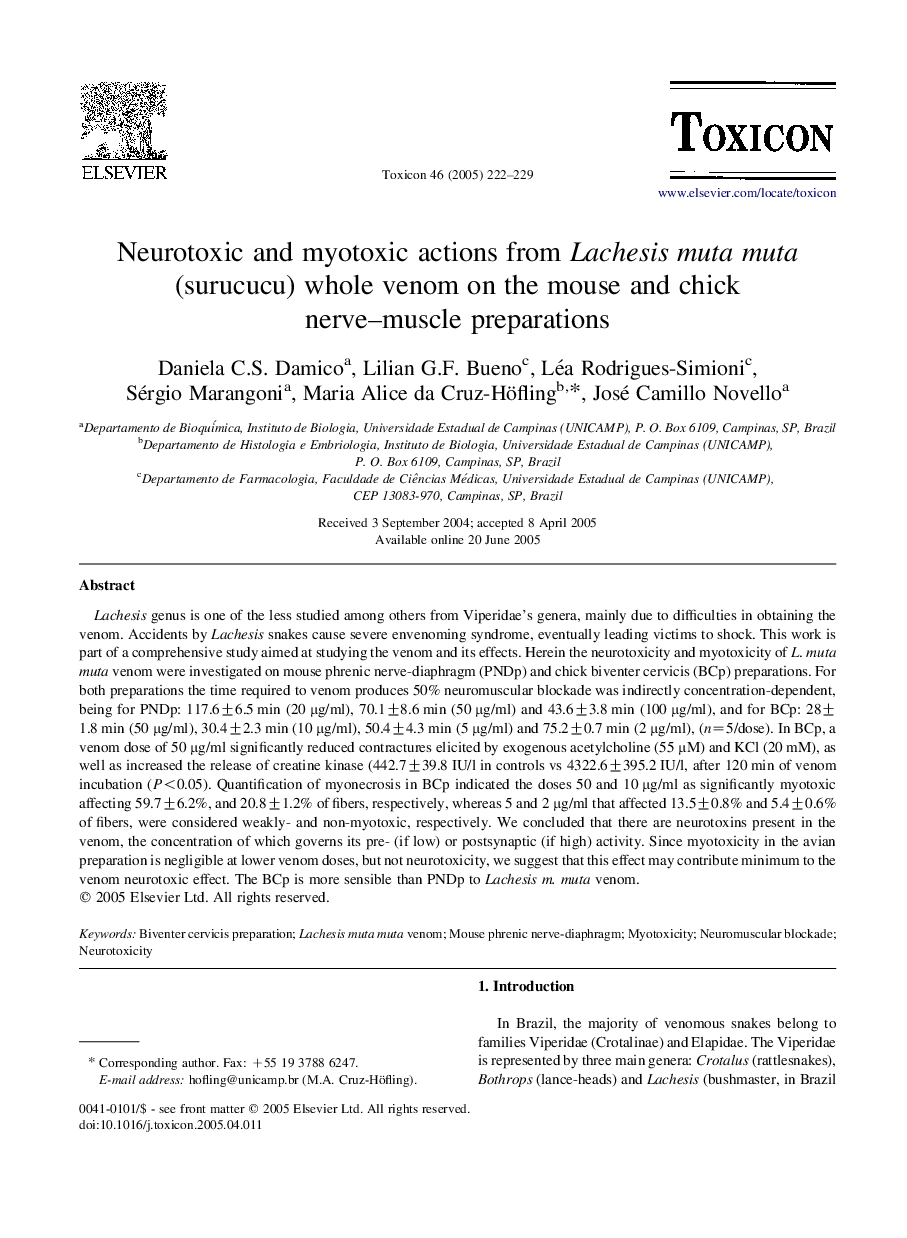| Article ID | Journal | Published Year | Pages | File Type |
|---|---|---|---|---|
| 10880616 | Toxicon | 2005 | 8 Pages |
Abstract
Lachesis genus is one of the less studied among others from Viperidae's genera, mainly due to difficulties in obtaining the venom. Accidents by Lachesis snakes cause severe envenoming syndrome, eventually leading victims to shock. This work is part of a comprehensive study aimed at studying the venom and its effects. Herein the neurotoxicity and myotoxicity of L. muta muta venom were investigated on mouse phrenic nerve-diaphragm (PNDp) and chick biventer cervicis (BCp) preparations. For both preparations the time required to venom produces 50% neuromuscular blockade was indirectly concentration-dependent, being for PNDp: 117.6±6.5 min (20 μg/ml), 70.1±8.6 min (50 μg/ml) and 43.6±3.8 min (100 μg/ml), and for BCp: 28±1.8 min (50 μg/ml), 30.4±2.3 min (10 μg/ml), 50.4±4.3 min (5 μg/ml) and 75.2±0.7 min (2 μg/ml), (n=5/dose). In BCp, a venom dose of 50 μg/ml significantly reduced contractures elicited by exogenous acetylcholine (55 μM) and KCl (20 mM), as well as increased the release of creatine kinase (442.7±39.8 IU/l in controls vs 4322.6±395.2 IU/l, after 120 min of venom incubation (P<0.05). Quantification of myonecrosis in BCp indicated the doses 50 and 10 μg/ml as significantly myotoxic affecting 59.7±6.2%, and 20.8±1.2% of fibers, respectively, whereas 5 and 2 μg/ml that affected 13.5±0.8% and 5.4±0.6% of fibers, were considered weakly- and non-myotoxic, respectively. We concluded that there are neurotoxins present in the venom, the concentration of which governs its pre- (if low) or postsynaptic (if high) activity. Since myotoxicity in the avian preparation is negligible at lower venom doses, but not neurotoxicity, we suggest that this effect may contribute minimum to the venom neurotoxic effect. The BCp is more sensible than PNDp to Lachesis m. muta venom.
Related Topics
Life Sciences
Biochemistry, Genetics and Molecular Biology
Biochemistry, Genetics and Molecular Biology (General)
Authors
Daniela C.S. Damico, Lilian G.F. Bueno, Léa Rodrigues-Simioni, Sérgio Marangoni, Maria Alice da Cruz-Höfling, José Camillo Novello,
